Much More Than Leopard Print: Dolce & Gabbana’s Alta Moda Pounces Into Action
Dolce Alta Gioielleria Atmosphere

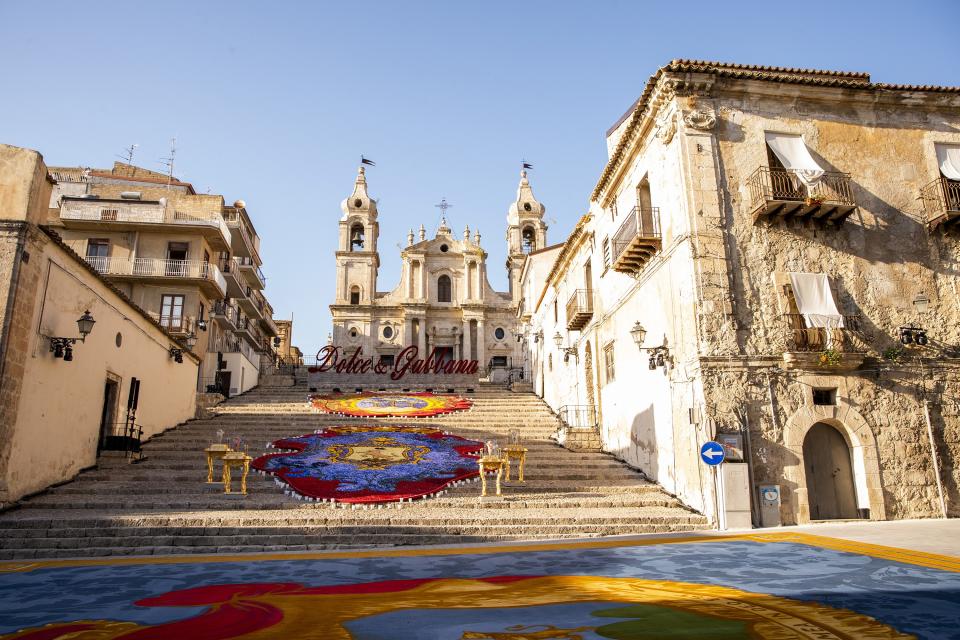
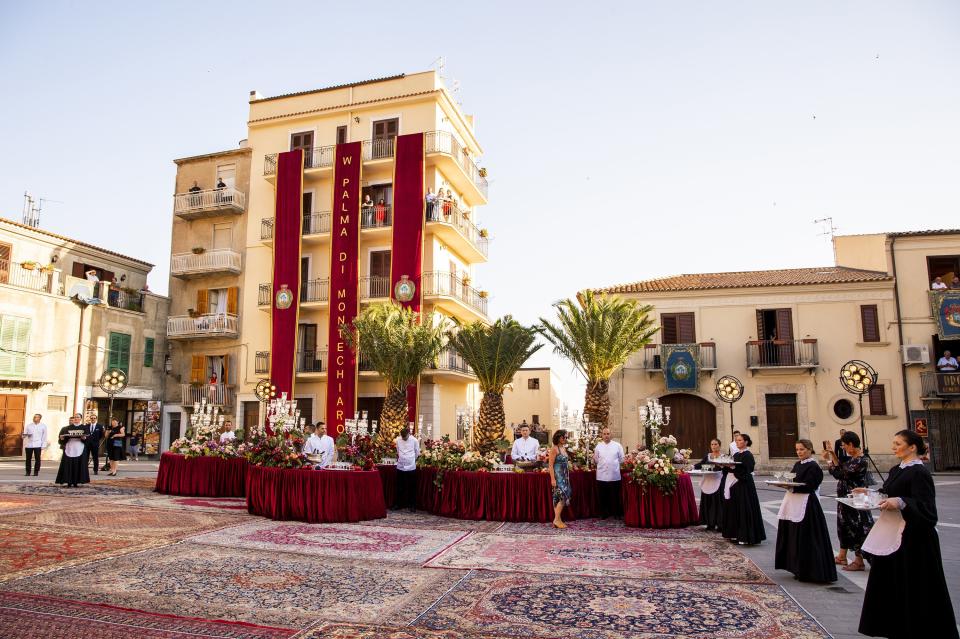
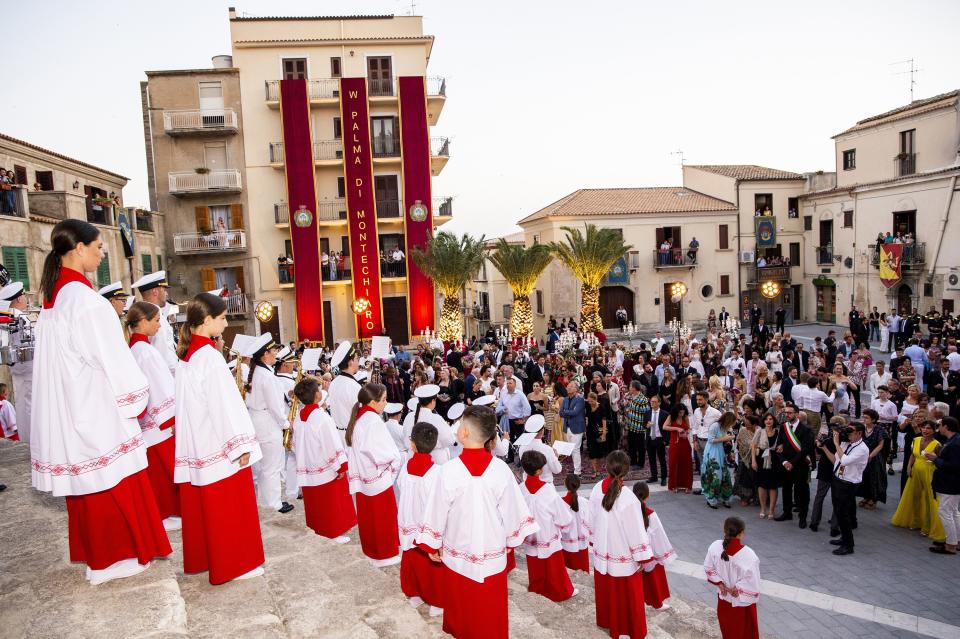

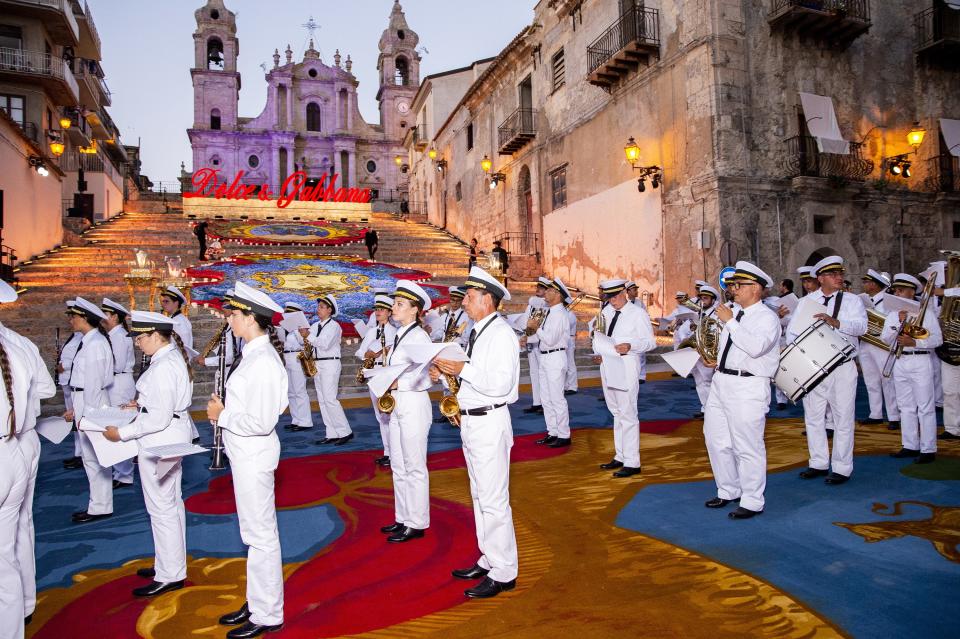
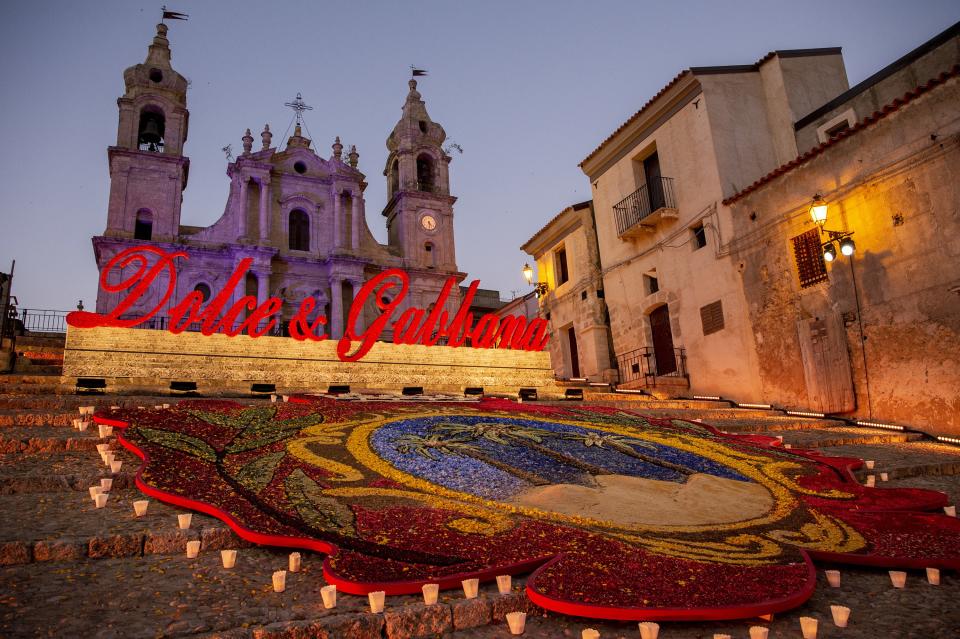
Practically a whole town remodeled, a princess near to tears, a priceless manuscript revealed, and a palazzo revived... Considering this was merely the warm-up for Dolce & Gabbana’s four-day, 2019 summer installment of Alta Moda, it was not without action.
This year around 400 of the Milan-based house’s couture clients have traveled to Sicily, Dolce & Gabbana’s spiritual home and aesthetic fountainhead. Following the launch of Alta Moda in Taormina (2012) and its Palermo return (2017) this will be the third and, on the evidence of tonight, potentially most spectacular Sicilian Alta Moda chapter yet.
Tomorrow evening’s womenswear show—the main event—will be held in the southern Sicilian town of Agrigento at a location several years in the planning and way too outrageous to be sullied by a spoiler here (Hamish Bowles will reveal all in his report shortly afterwards). For tonight’s traditional preamble, the presentation of the Alta Gioielleria collections, Domenico Dolce and Stefano Gabbana settled on the nearby-ish town of Palma di Montechiaro.
One background reason, as Dolce explained, is that it was not far from here that the first American and Allied forces landed on July 9, 1943 to spearhead Operation Husky—the very first action in the liberation of Europe. More precisely, Palma di Montechiaro was chosen because it is the birthplace and family seat of Giuseppe Tomasi Di Lampedusa, author of The Leopard. Whether in the 1963 film adaptation by Luchino Visconti (starring Burt Lancaster, Alain Delon, and Claudia Cardinale) or in his 1957 published original (written after the Allies bombed his Palermo house to ruins in 1943), Lampedusa’s tale of an ancient family dynasty’s fading in the face of social progress during the 1860’s Risorgimento movement (which would lead to the unification of Italy) is part Gone With The Wind, part magical realist existential love poem, and has been rightly cited as one of the finest historical novels ever written.
This town is where that novel was set, but it is off the beaten trail. Tonight, it was polished as perhaps never before. Surrounded by crowds of townsfolk, guests entered one piazza in which a choir sung on a terrazzo, while another sang on the steps of a monastery. After a while we were led by a brass band down a shopping street in which it quickly became apparent—given the ragged and rundown appearance of this Palma’s fringes—that the scenery was almost too perfect. Vintage Vespas and Fiat 500s rested outside beautifully signaged pizzerias, a tabbachi (whose owner boldly wore an Emporio Armani shirt), a pharmacia, and a bar. A parlay with the white-coated pharmacia staff established that the whole area had been restored and beautified in a building work began in April, specifically designed for this evening.
Dolce Alta Gioielleria Jewelry
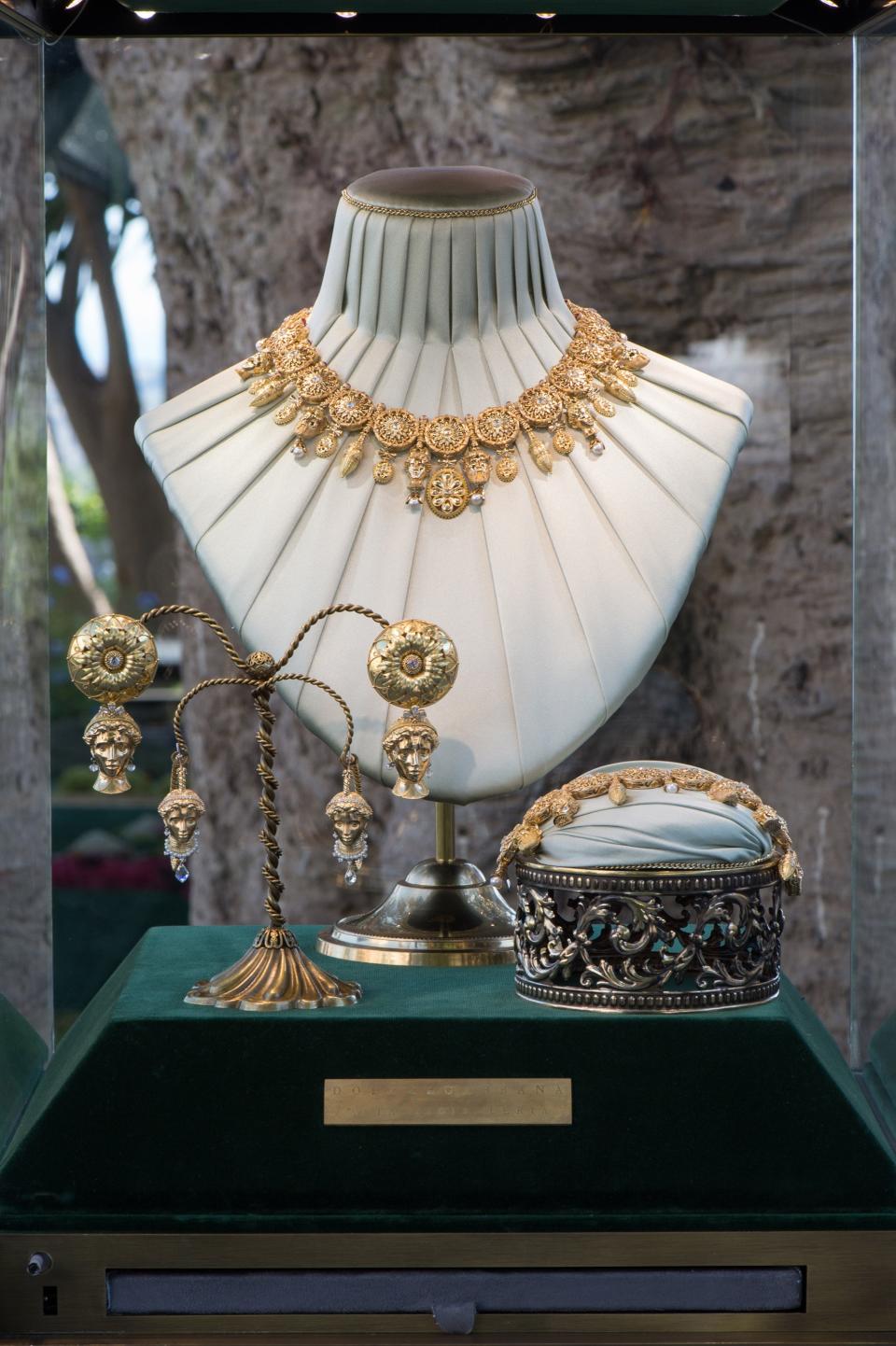
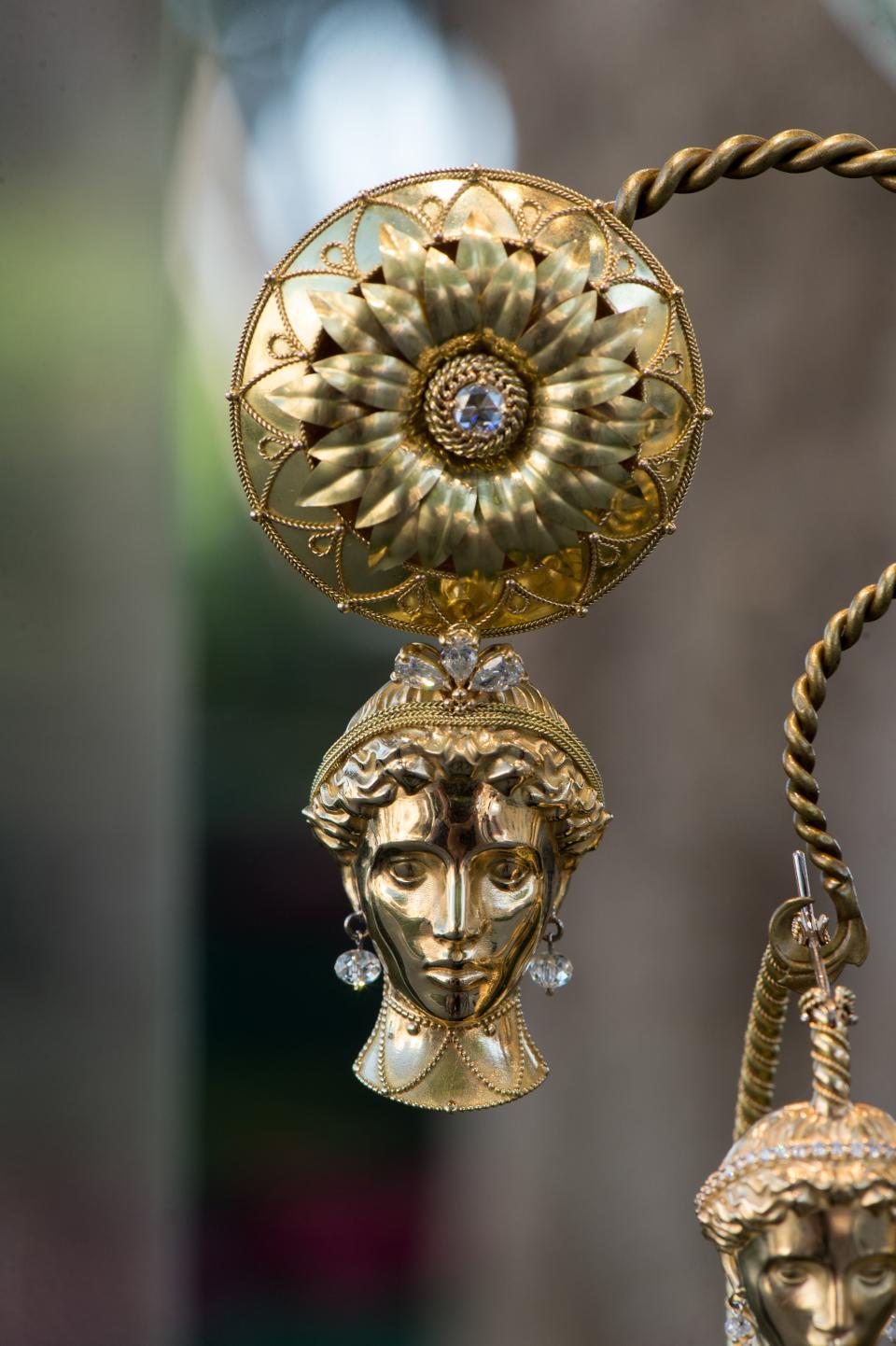


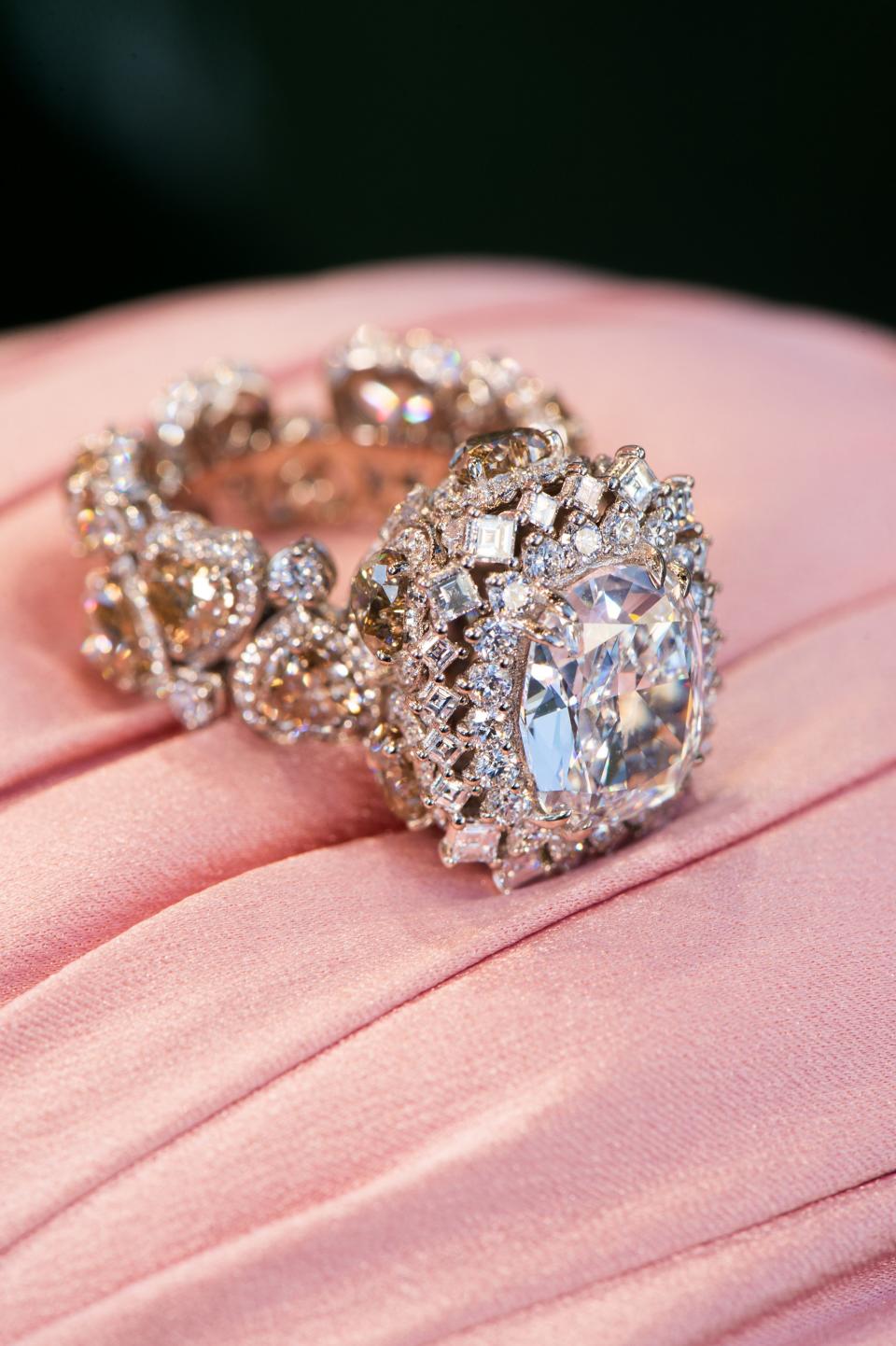
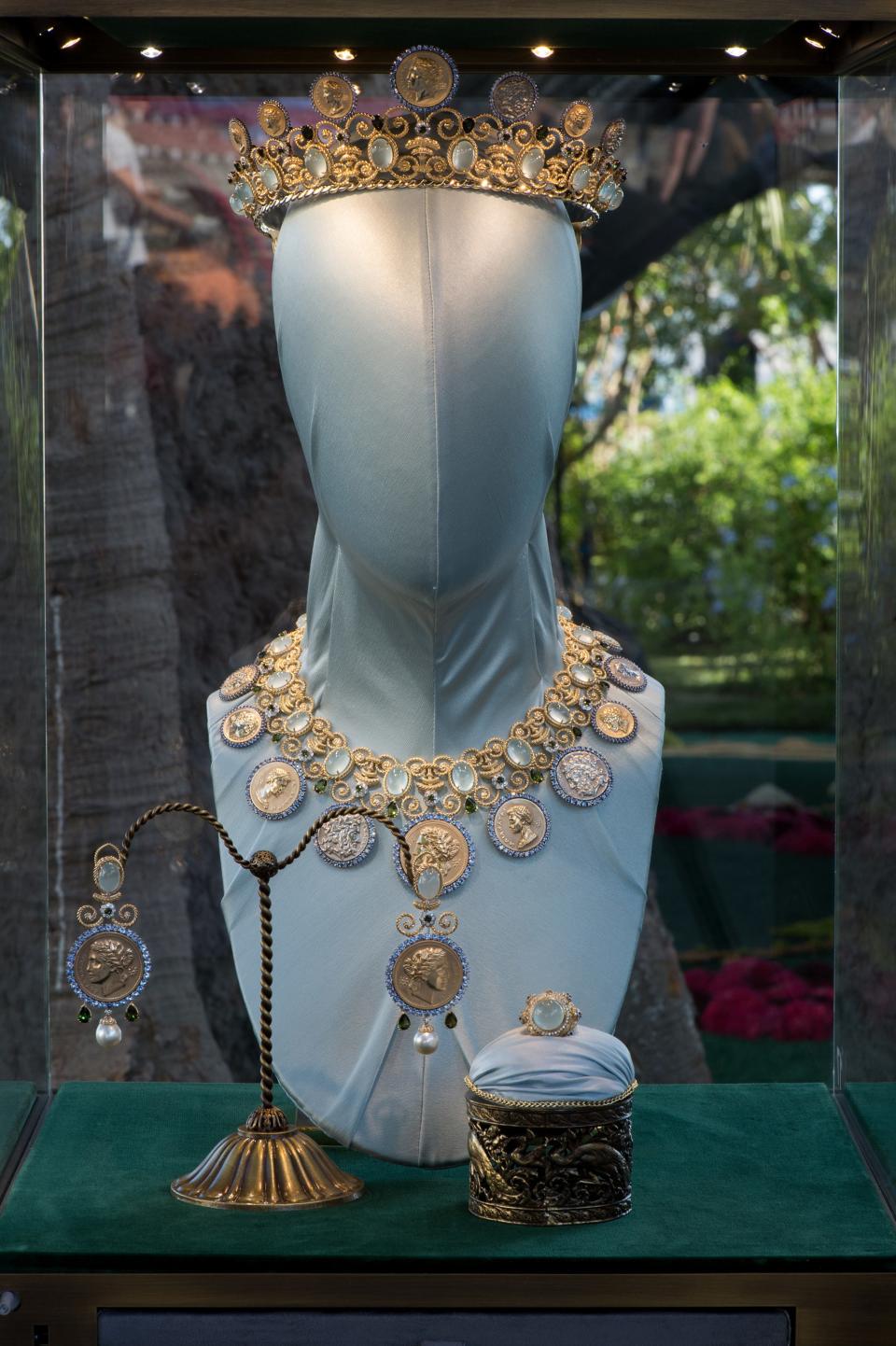
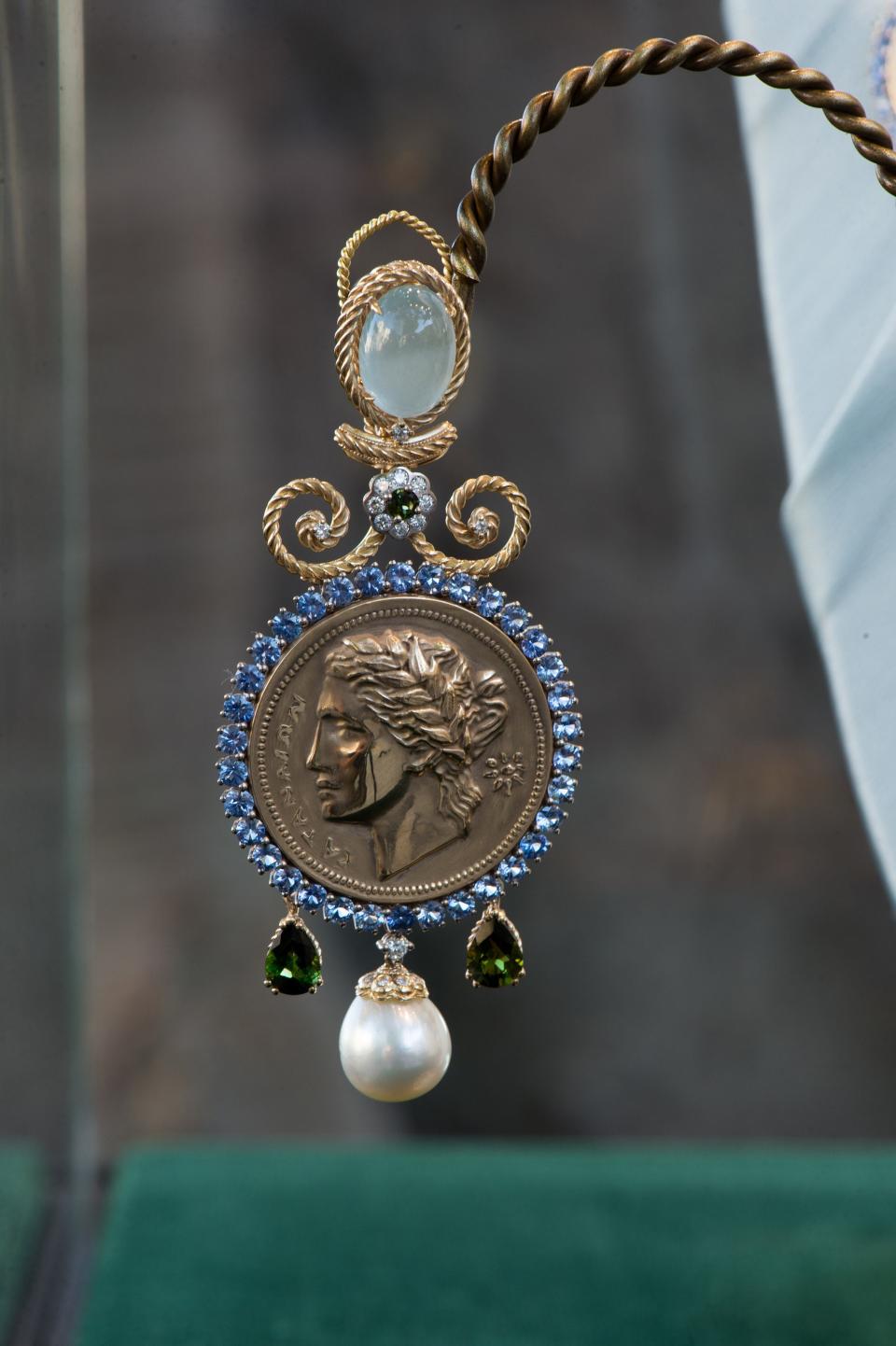



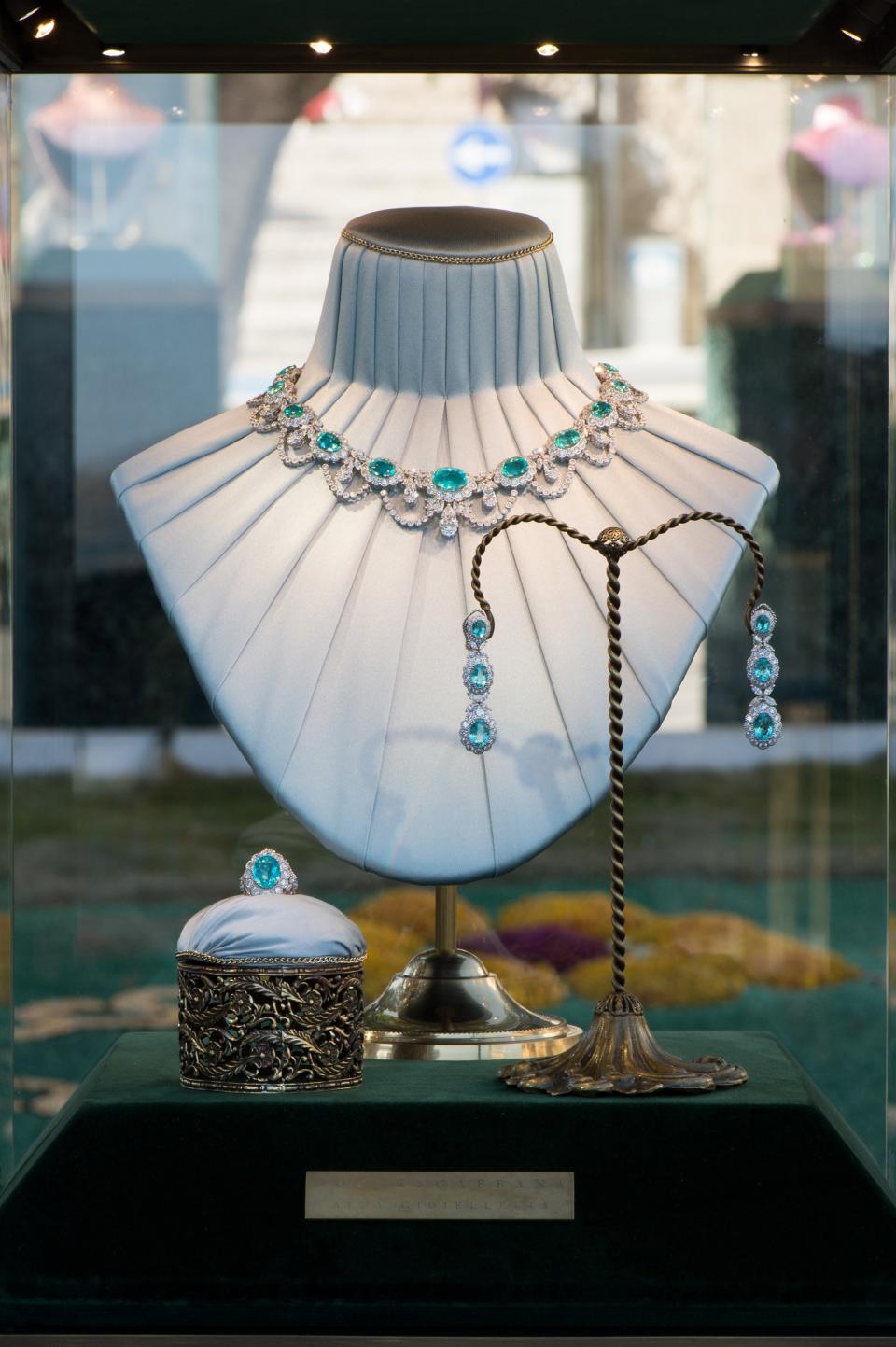
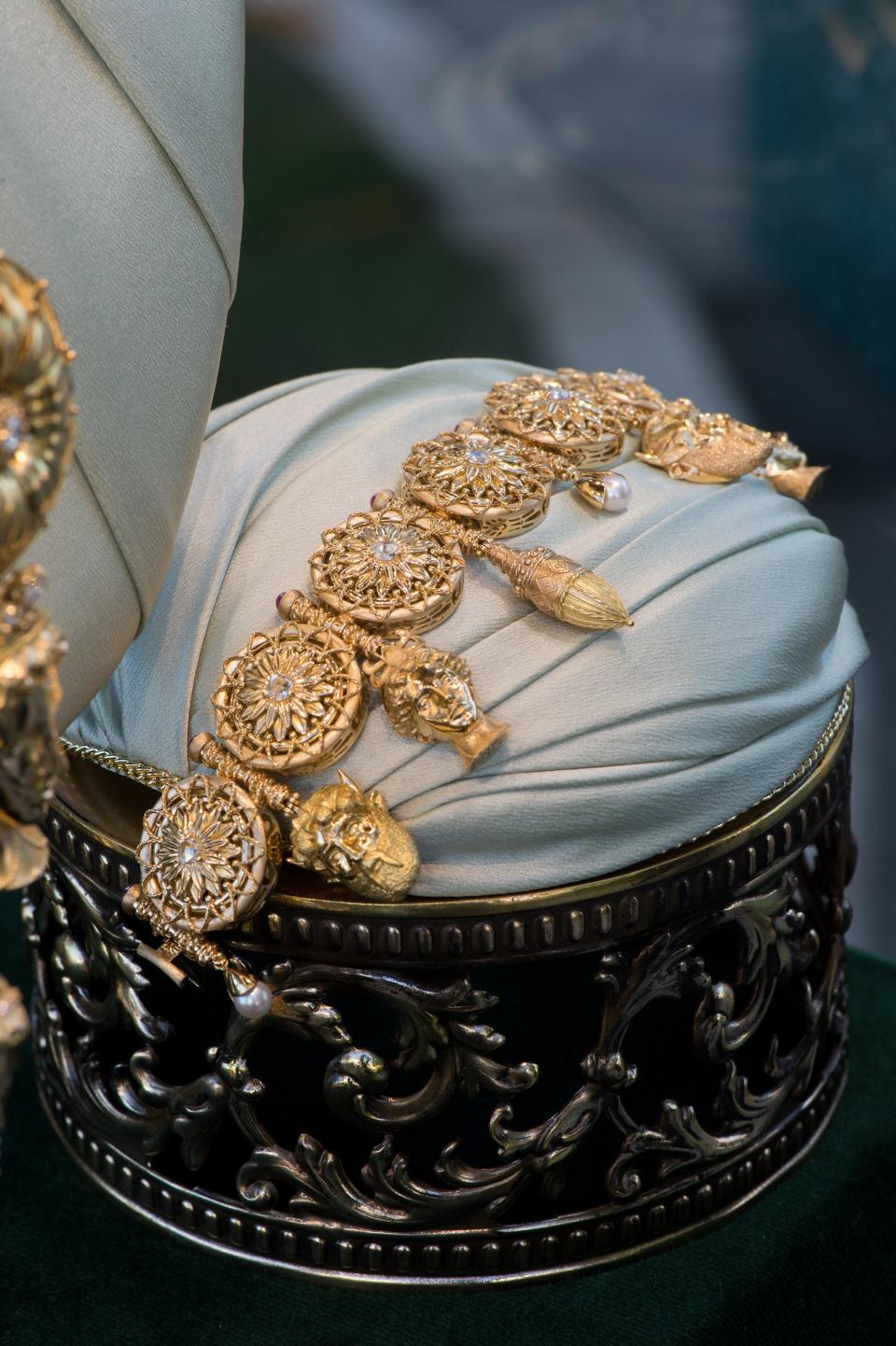

As residents threw rose-petals from the balconies above, at the end of the street we hit another piazza, this one much bigger that the last, from one end of which was a balcony overlooking the Mediterranean. Within it, beneath some sprawlingly ancient fig trees, were the vitrines containing this season’s jewelry collection. These featured knuckle-sized diamonds, olive-sized emeralds, and bullet-like rubies all set into bracelets and necklaces of gold and silver made to resemble entwined geckos and snakes and other plutocrat’s playthings. The buyers retreated to special buyers’ tents to try them on and talk business. We non-buyers drifted on into the anterior Palazzo Ducale—the birthplace and family seat of Lampedusa and his clan—where dinner was to be held.
Here we were greeted by the town’s mayor, Stefano Castellino, who hinted at the pharmacist-revealed regeneration funds pumped into it by Dolce & Gabbana when he said: “Our eternal thanks to Stefano and Domenico for leaving a sign in this town that will never be canceled. This July 4th will remain forever in our hearts.” Next, on a stage in the palazzo courtyard in front of Lampedusa’s family’s leopard and palm tree crest, appeared Sylvia Mantella. Despite strong competition this Toronto-based philanthropist zoo-keeper has emerged as one of Alta Moda’s most eye-catching clients of late, and made a powerful splash at April 2018’s Metropolitan Opera House Alta Moda show in New York wearing a gown almost too wide to allow her up its considerable staircase. Tonight she announced she was donating that gown—which is hand-painted with two leopards, was inspired by the novel—and was purchased by her at the Palermo show in 2017—to Palazzo Valguarnera Gangi, the location of much of Visconti’s movie. That Palazzo’s current owner, Princess Carine Vanni Mantegna di Gangi, came up to accept the gift apparently close to tears before Lampedusa’s heir, Gioacchino Lanza Tomasi Duca di Palma, gave us some family background and ushered us upstairs for dinner. Here the original manuscript of The Leopard was on display and the first course was “Leopard” Timbale—a macaroni pie that is sumptuously described in the novel as a dance floor snack.
By this point it was getting close to midnight, and sorely aware that colleagues back in New York were poised to post this yarn so they could go out and celebrate July 4th, I headed back out to the piazza to write it. “I’m just a designer, but we know our history!” Dolce had joked earlier. This first course of this year’s Alta Moda was as dense with lovingly considered detail and effort as Lampedusa’s metaphorically telling macaroni pie. Tomorrow’s second course promises to be a blast.
Originally Appeared on Vogue

